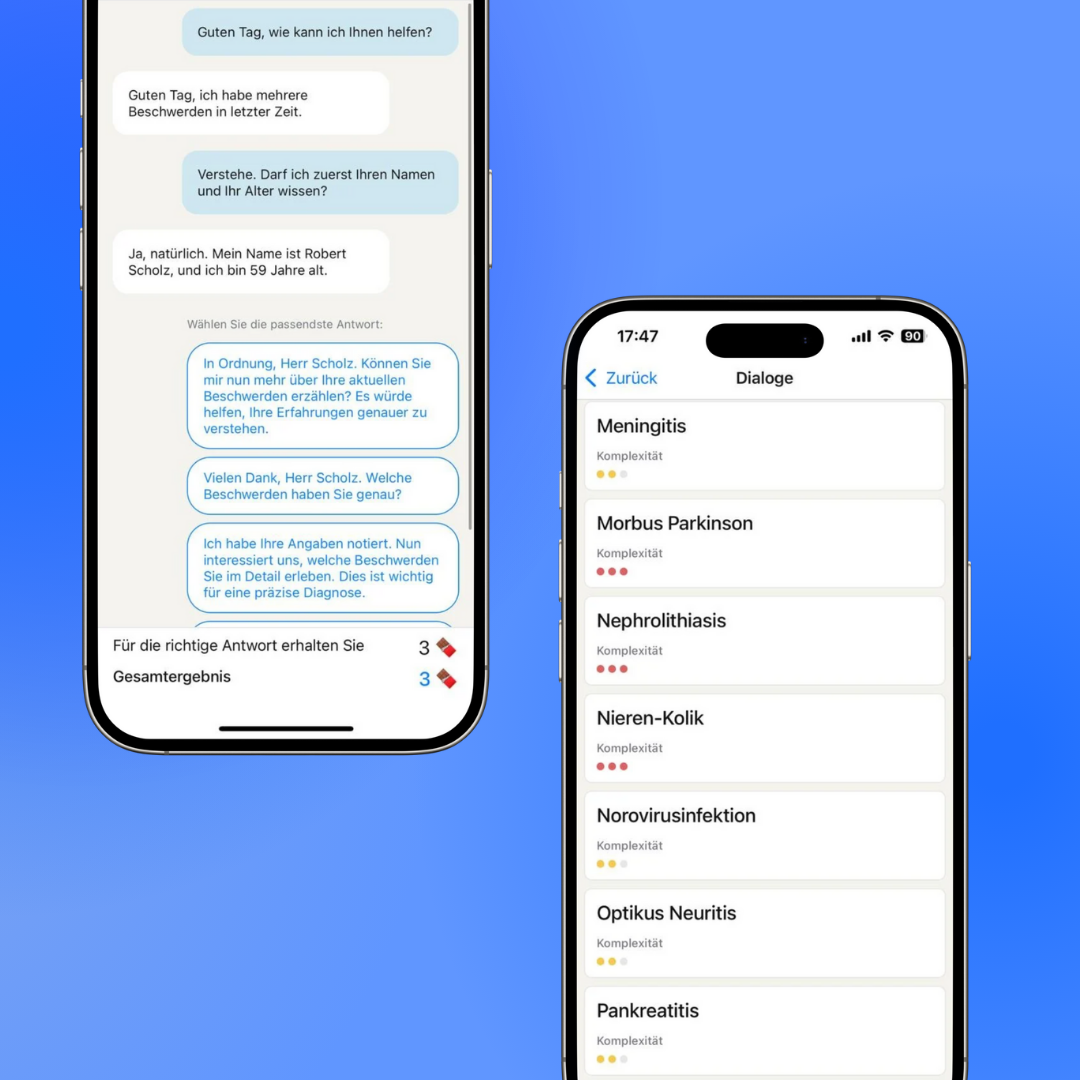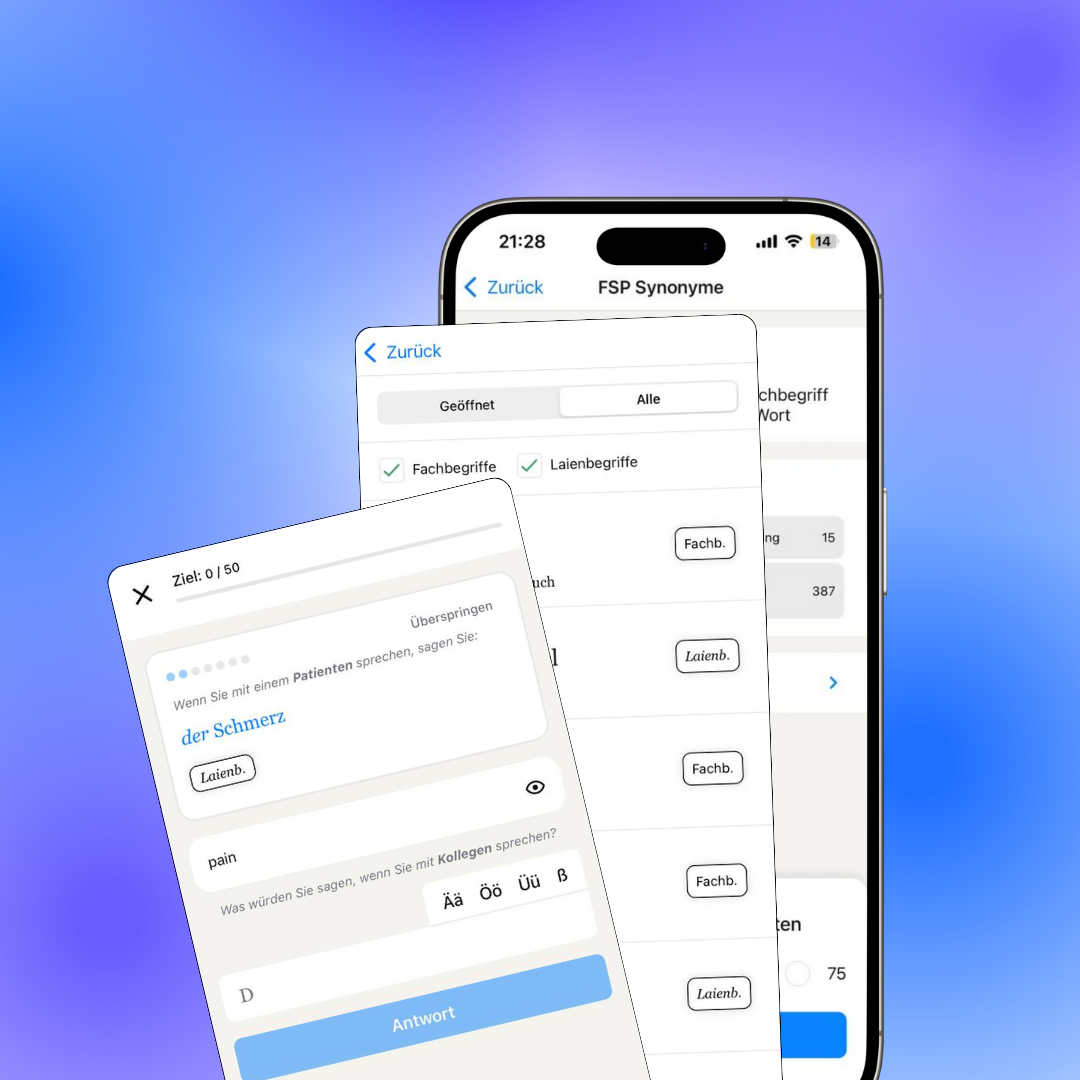Medical German in Communication with Patients and Colleagues: Differences and Examples
In Germany, medical communication is built on a clear distinction between professional terms (Fachbegriffe) and lay terms (Laienbegriffe). This distinction ensures effective and high-quality communication with both patients and colleagues.
If you plan to work as a doctor or nurse in Germany, understanding the differences between professional and lay language is a key skill
If you plan to work as a doctor or nurse in Germany, understanding the differences between professional and lay language is a key skill
Talking to Patients: Plain Language
When speaking to patients, German doctors are required to use only lay terms (Laienbegriffe) so that patients can fully understand their situation. This requirement stems from legal obligations to provide information in a clear and comprehensible manner.
Examples:
- Instead of Myokardinfarkt, a doctor will say Herzinfarkt or even Herzanfall.
- Instead of Hypertonie, they will use Bluthochdruck.
Patients often get confused when hearing complex medical terminology. Therefore, doctors must explain diagnoses in simple terms. This not only builds trust but also reduces the risk of misunderstandings that might impact treatment.
Talking to Colleagues: Professional Language
When communicating with colleagues, doctors in Germany use professional medical terms (Fachbegriffe). This is crucial for precision and clarity during diagnosis discussions, case reviews, or interdisciplinary collaboration.
Examples:
- To a patient, a doctor might say: "Wir müssen die Mandeln entfernen." To a colleague: "Wir planen eine Tonsillektomie."
- To a patient: "Ihr Herz schlägt unregelmäßig." To a colleague: "Der Patient zeigt Symptome von Vorhofflimmern."
This distinction avoids ambiguity in professional contexts while ensuring clarity for patients.
Example Dialogues
Scenario: A patient complains of abdominal pain.
- Conversation with a Patient:
(Plain explanation: stomach lining inflammation)
- Conversation with a Colleague:
(Precise medical term: Gastritis.)
Advantages of This System
- Transparency for Patients. Simplifying language reduces stress and helps patients make informed decisions.
- Precision in Professional Settings. Using medical terminology allows doctors to discuss complex cases effectively without losing critical details.
Examples of Medical Terms in German:
- das Abdomen (Fachbegriff) – der Bauchraum, der Bauch (Laienbegriff)
- das Analgetikum (Fachbegriff) – das Schmerzmittel (Laienbegriff)
- die Anästhesie (Fachbegriff) – die Betäubung (Laienbegriff)
- die Bluttransfusion (Fachbegriff) – die Blutübertragung (Laienbegriff)
- das Cerebellum (Fachbegriff) – das Kleinhirn (Laienbegriff)
- die Dialysis (Fachbegriff) – die Blutwäsche (Laienbegriff)
- das Eczema (Fachbegriff) – die Juckflechte (Laienbegriff)
- das Hepar (Fachbegriff) – die Leber (Laienbegriff)
- die Intoxikation (Fachbegriff) – die Vergiftung (Laienbegriff)
- die Laryngitis (Fachbegriff) – die Kehlkopfentzündung (Laienbegriff)
Conclusion
The distinction between Laienbegriffe and Fachbegriffe is a fundamental part of medical practice in Germany. It promotes mutual understanding, transparency, and professionalism. For those preparing to work in the German healthcare system, mastering this distinction is essential.
[Advertisement Banner: Prepare with our app!]
2024-12-04 15:30

